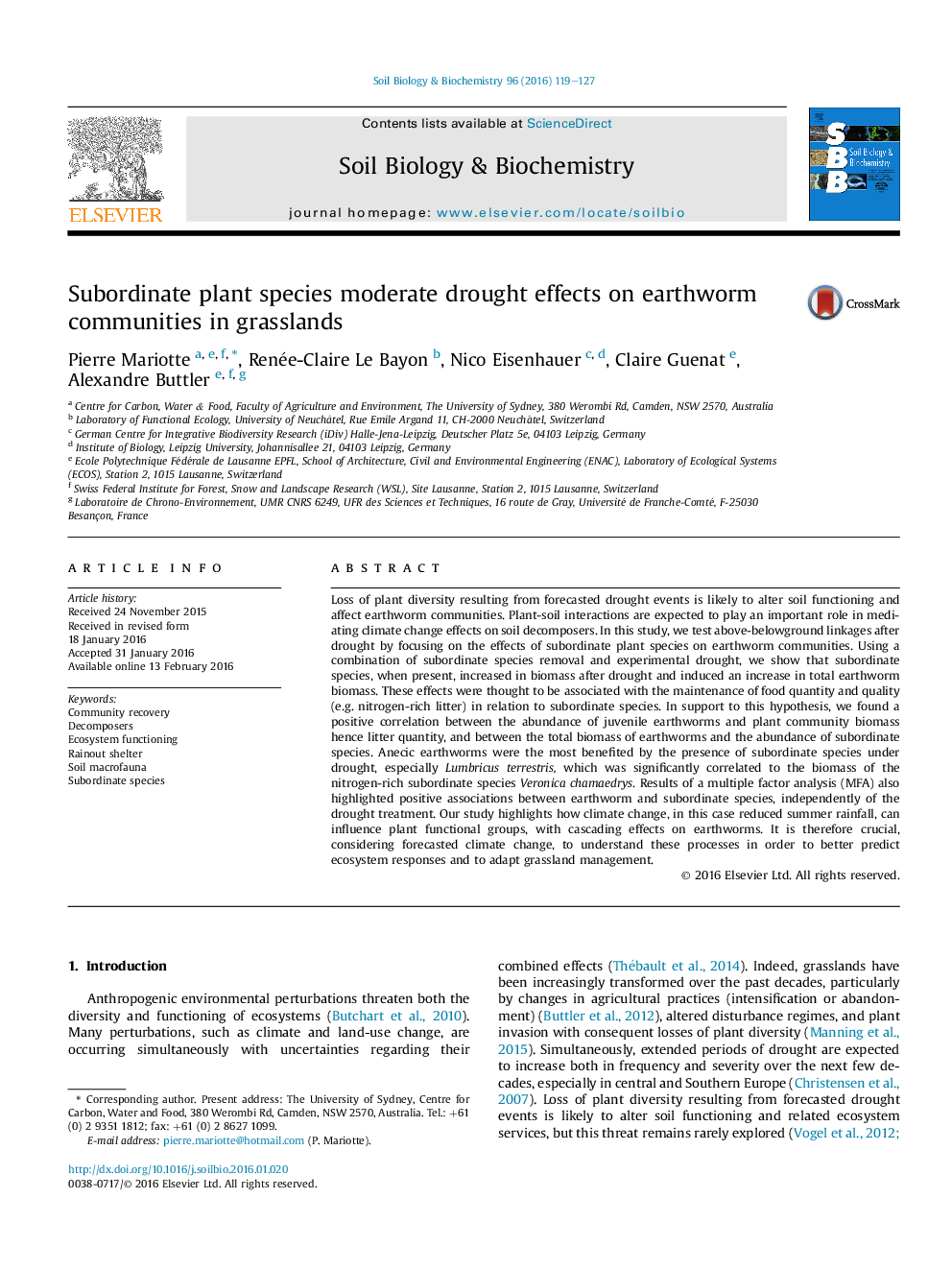| Article ID | Journal | Published Year | Pages | File Type |
|---|---|---|---|---|
| 2024353 | Soil Biology and Biochemistry | 2016 | 9 Pages |
•Subordinate plant species increased their biomass after drought.•Relative abundance of juvenile earthworms increased with plant biomass production.•Total biomass of earthworms was positively correlated to subordinate plant biomass.•Anecic earthworms were the most benefited by subordinate plant species.
Loss of plant diversity resulting from forecasted drought events is likely to alter soil functioning and affect earthworm communities. Plant-soil interactions are expected to play an important role in mediating climate change effects on soil decomposers. In this study, we test above-belowground linkages after drought by focusing on the effects of subordinate plant species on earthworm communities. Using a combination of subordinate species removal and experimental drought, we show that subordinate species, when present, increased in biomass after drought and induced an increase in total earthworm biomass. These effects were thought to be associated with the maintenance of food quantity and quality (e.g. nitrogen-rich litter) in relation to subordinate species. In support to this hypothesis, we found a positive correlation between the abundance of juvenile earthworms and plant community biomass hence litter quantity, and between the total biomass of earthworms and the abundance of subordinate species. Anecic earthworms were the most benefited by the presence of subordinate species under drought, especially Lumbricus terrestris, which was significantly correlated to the biomass of the nitrogen-rich subordinate species Veronica chamaedrys. Results of a multiple factor analysis (MFA) also highlighted positive associations between earthworm and subordinate species, independently of the drought treatment. Our study highlights how climate change, in this case reduced summer rainfall, can influence plant functional groups, with cascading effects on earthworms. It is therefore crucial, considering forecasted climate change, to understand these processes in order to better predict ecosystem responses and to adapt grassland management.
